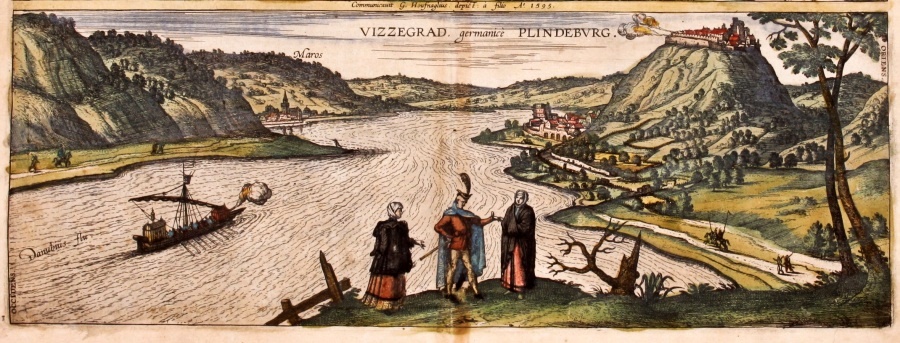Visegrád

Visegrád (pronounced VEE-sheh-grahd) is a small town in Pest County, Hungary, about 40 km north of Budapest. It lies on the right bank of the Danube at the famed Danube Bend, where the river turns south. The town is encircled by the forested Visegrád Mountains, part of the Duna–Ipoly National Park, making it a popular starting point for hiking and scenic river travel.
The area has been inhabited since antiquity; a late Roman fort once stood on Sibrik Hill. The name “Visegrád,” of Slavic origin, means “high castle,” and the town is dominated by its medieval fortifications: the Upper Castle (Citadel/Fellegvár) on the ridge and the Lower Castle near the river with the Solomon Tower.
The first Latin charter mentions Visegrád in 1009. Its first castle was built on the site of the castrum, using its stones, but this castle was destroyed during the Mongol invasion.
The present-day castle system was begun in the 1250s by King Béla IV and his wife, Queen Maria. Its components are the Fellegvár (Citadel) standing on the 328‑meter‑high hill, the Lower Castle on the hill at the foot of Castle Hill, and the Water Bastion on the Danube bank. The town attained international significance in the 14th century, under the Angevin (Anjou) dynasty. Around 1320, Charles I (Charles Robert) began building the royal palace on the town’s main street, near the Danube. From 1323 until 1408, it served as the capital of the medieval Kingdom of Hungary.
After the death of Charles I, a Polish delegation visited his son, King Louis the Great, in Visegrád and offered him the Polish crown. Following the coronation ceremony, alongside the Hungarian Holy Crown, the Polish crown was also kept by the crown guard in the treasury of the Citadel.
Visitors from distant lands described Visegrád as an “earthly paradise.” This flourishing lasted until the Ottoman period, when, as elsewhere in the country, great decline and devastation began. In the fighting for the castle and the town, Visegrád was almost completely destroyed. The survivors went into hiding, abandoning the settlement that had become uninhabitable. The remaining parts of the castle were blown up in 1702 by order of the Austrian emperor Leopold I.
Visegrád gained international renown in 1335 when, at the invitation of the Hungarian king Charles I (Charles Robert), John of Bohemia, Casimir the Great of Poland, Charles, Margrave of Moravia, Henry of Wittelsbach, Duke of Bavaria, and Rudolf, Duke of Saxony met here to forge alliances and establish new trade routes. The modern Visegrád Group (Hungary, Poland, the Czech Republic, Slovakia), founded in 1991, consciously preserves this heritage.
Today, visitors come for the castles, the palace ruins, and the panoramic views over one of the most striking stretches of the Danube.